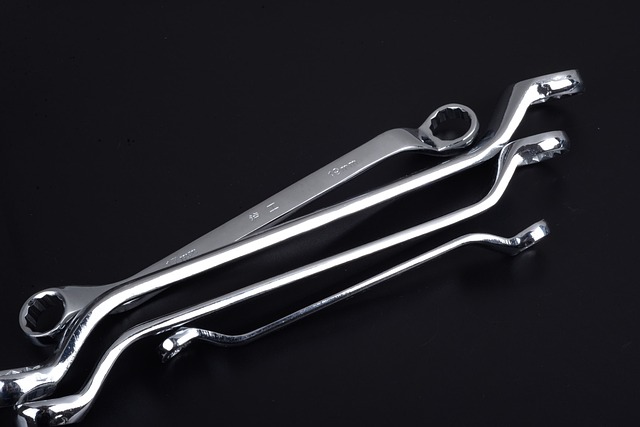Odor removal from upholstery involves identifying sources like spills, pet accidents, smoke, or mold, then using appropriate methods—natural (baking soda, vinegar) or chemical (steam cleaning, specialized chemicals)—to tackle musty, chemical, or other distinct smells. Pre-treatment with distilled white vinegar or dedicated sprays enhances main process efficiency. Regular vacuuming, spot testing, thorough ventilation, and quick stain treatment with odor absorbers like baking soda prevent future issues.
Odor removal from upholstery is a critical aspect of maintaining a clean and fresh living space. This comprehensive guide delves into the world of upholstery odors, exploring their causes and types. We provide pre-treatment tips for preparing your furniture before cleaning. Common techniques and a comparison between natural and chemical solutions are discussed, along with best practices and maintenance advice to prevent future odors. Discover effective strategies for eliminating even the most stubborn smells from your upholstery.
Understanding Upholstery Odors: Causes and Types

Upholstery odors can stem from various sources, making it essential to understand these causes for effective odor removal. Common culprits include spills and stains, pet accidents, smoke, mold growth, and simply age or poor ventilation. Each of these issues can lead to different types of smells, from musty and earthy to pungent and chemical.
Identifying the source is the first step in addressing the problem. Spills and stains often leave behind organic compounds that break down over time, causing persistent odors. Pet messes introduce amine compounds, while smoke and mold can impart a distinct, often unpleasant aroma. Recognizing these types of odors helps determine the best approach for effective odor removal.
Pre-Treatment: Preparing Your Upholstery for Cleaning

Before diving into any odor removal process, proper pre-treatment is crucial. This initial step involves preparing your upholstery to ensure the best possible cleaning results and prevent further damage. Start by vacuuming the affected areas thoroughly; this removes loose dirt and debris that might interfere with the cleaning solution. For stubborn odors, a light spritz of distilled white vinegar or a dedicated pre-treating spray can help break down the smell at the source.
Gently dabbing the stained or odorous spot with a clean cloth soaked in the chosen pre-treatment solution is recommended. Avoid rubbing, as it could spread the odor or damage the fabric. Let the pre-treatment sit for a few minutes to allow its active ingredients to penetrate the fibers. This simple preparation step significantly enhances the cleaning efficiency during the main odor removal process.
Common Odor Removal Techniques for Upholstery

Many common odor removal techniques can effectively tackle stubborn smells in upholstery. One widely used method is steam cleaning, which uses hot water and steam to loosen dirt and debris embedded in fabric fibers, along with any associated odors. This deep cleaning process not only refreshes the fabric but also kills bacteria and prevents future malodors.
Another popular approach is the use of specialized odor-neutralizing chemicals. These products are designed to break down and eliminate specific types of molecules responsible for unpleasant scents. They can be applied directly to the affected areas or used in conjunction with carpet cleaning machines. Additionally, natural remedies like baking soda or charcoal have been found effective in absorbing and neutralizing odors, making them budget-friendly alternatives for minor odor issues.
Natural and Chemical Solutions: A Comparison

When it comes to removing odors from upholstery, there are two primary approaches: natural solutions and chemical solutions. Natural remedies, such as baking soda, vinegar, and essential oils, are popular choices due to their affordability, accessibility, and eco-friendliness. These methods often involve sprinkling substances on the affected area, letting them sit for a period, and then vacuuming or wiping away the residue. For instance, combining white vinegar and water can effectively eliminate musty smells, while baking soda absorbs odors and leaves behind a fresh scent when activated by moisture.
On the other hand, chemical solutions offer powerful odor eliminators but come with potential drawbacks. Many commercial products contain synthetic chemicals that may leave behind residues or emit strong fumes. While they swiftly eradicate odors, these chemicals can be costly and might not be suitable for sensitive individuals or environments due to their potency. In terms of long-term effectiveness, natural solutions may require more frequent application, while chemical treatments could offer prolonged odor control. The choice between the two often boils down to personal preference, the severity of the odor, and considerations about health and environmental impact.
Best Practices for Effective Odor Elimination

When tackling odor removal from upholstery, it’s essential to adopt best practices for effective elimination. Start by identifying the source of the smell; different odors require specific approaches. Is it a pet-related stink, smoke residue, or something more? Understanding the root cause is key to successful treatment.
Next, use appropriate cleaning solutions. Enlist the help of natural enzymes or specialized odor eliminators designed for fabric. These products break down malodors at their source, leaving behind fresh scents. Always spot-test first and follow instructions carefully to avoid damaging the upholstery. Additionally, thorough ventilation is crucial; open windows and doors to let fresh air circulate, helping to dispel persistent smells.
Maintenance Tips to Prevent Future Odors

Regular upkeep is key to preventing future odor issues in upholstery. Start by vacuuming your furniture regularly, focusing on areas prone to dirt and debris buildup. Use a vacuum attachment designed for cushions and crevices to reach deep into the fabric. Additionally, cleaning with a mild detergent or specialized upholstery cleaner can eliminate surface stains and odors before they embed.
Protecting your upholstery from spills and moisture is another effective strategy. Act quickly when something spills; blot the liquid with a clean cloth rather than rubbing, which can spread the stain. For persistent smells, consider using odor-absorbing materials like baking soda or charcoal, which can be sprinkled onto the affected area before vacuuming for enhanced results in odor removal.
